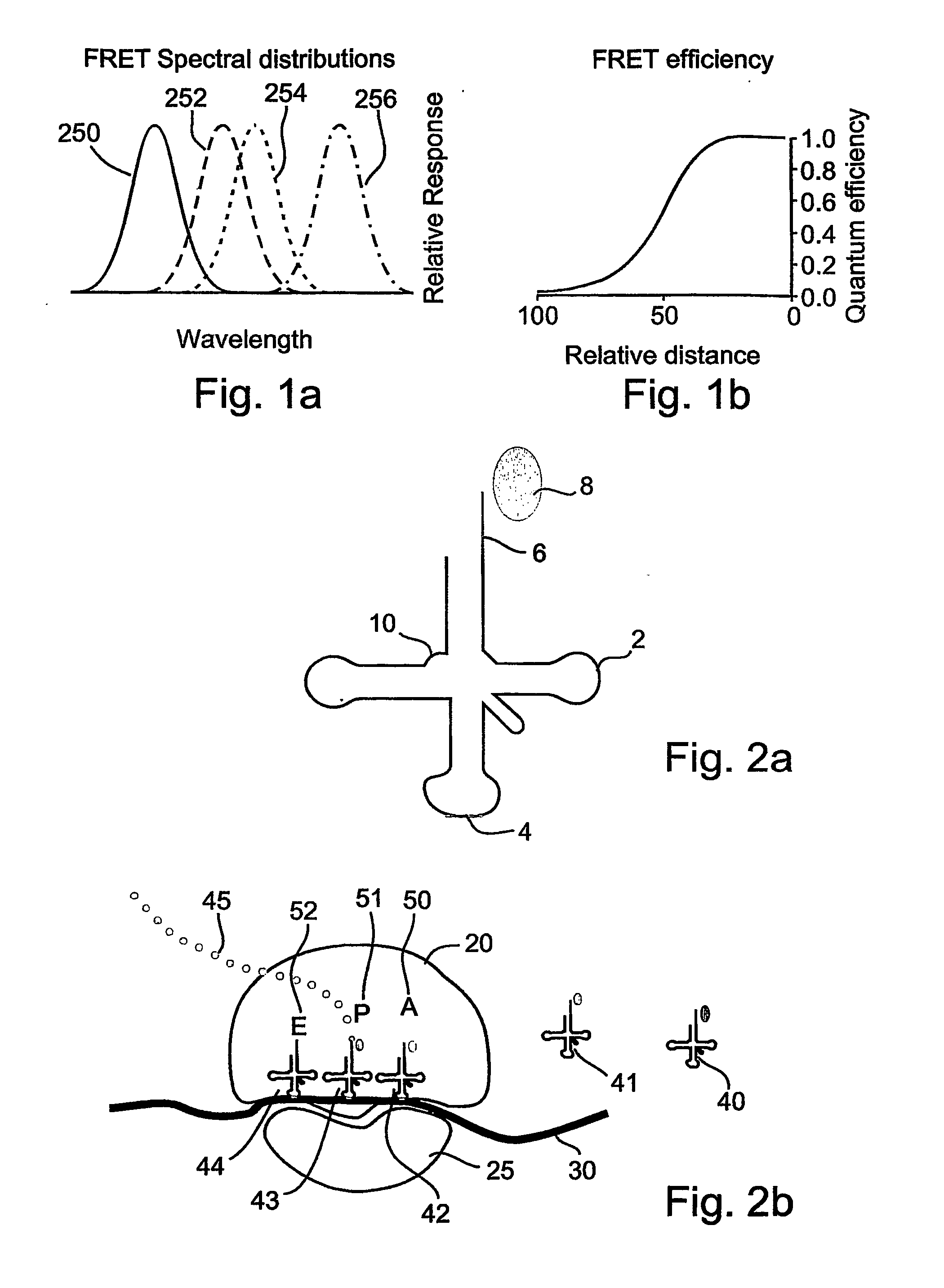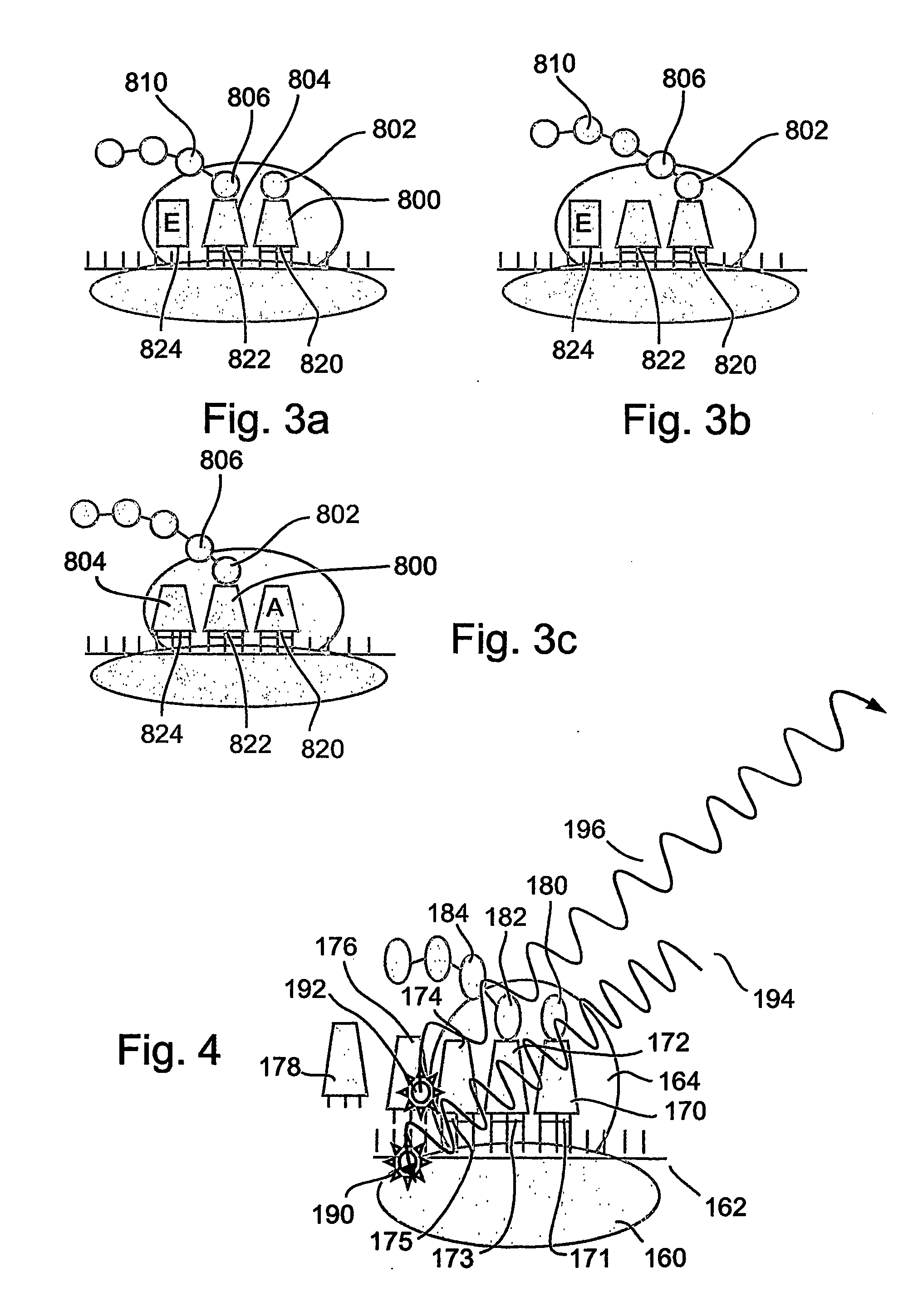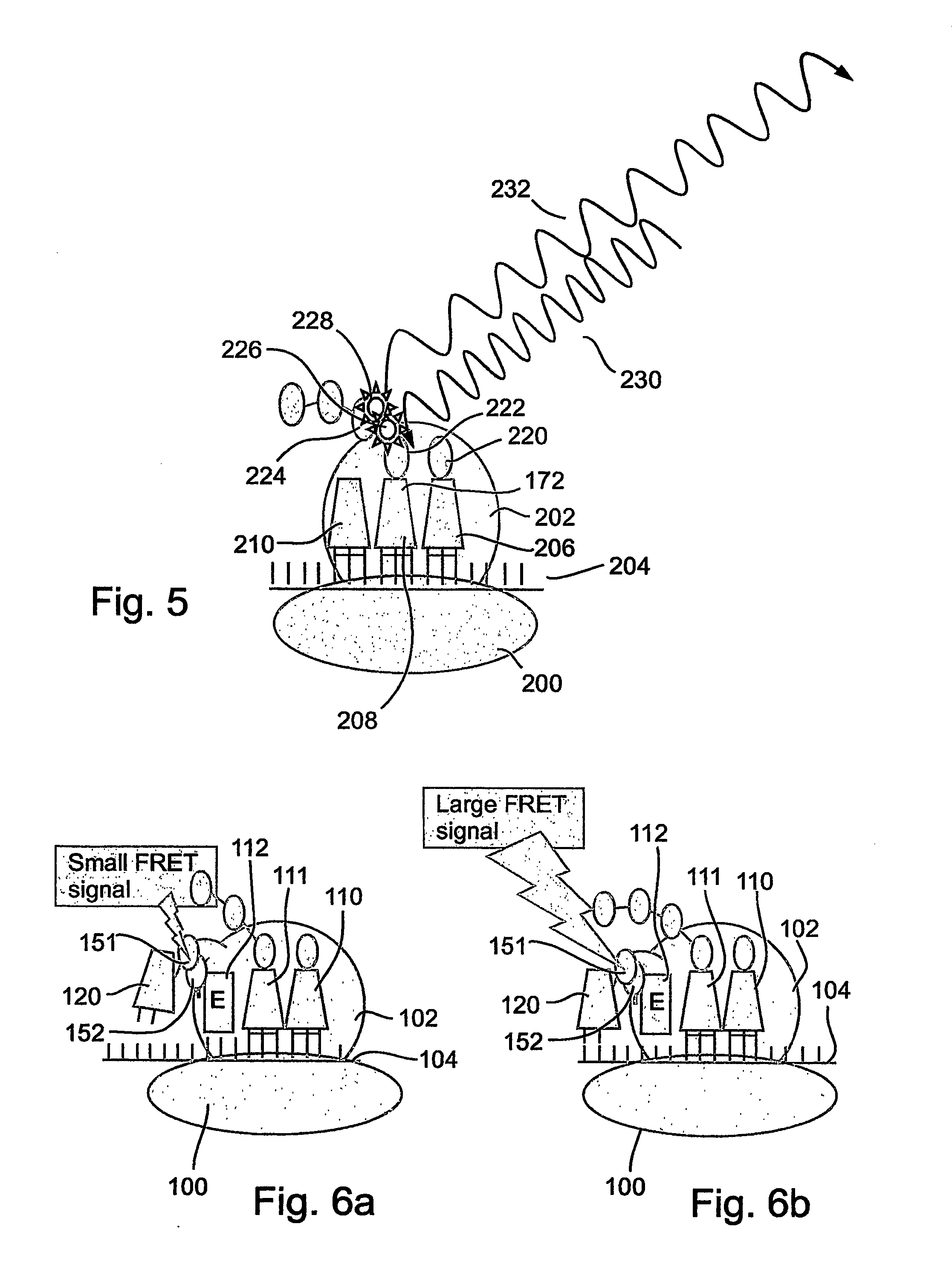Protein synthesis monitoring (psm)
a protein synthesis and monitoring technology, applied in the field of ribosome protein synthesis monitoring, can solve the problems of missing entire protein families, difficult and slow, expensive, etc., and achieves the effects of high quantitation accuracy, high sensitivity, and high sensitivity
- Summary
- Abstract
- Description
- Claims
- Application Information
AI Technical Summary
Benefits of technology
Problems solved by technology
Method used
Image
Examples
Embodiment Construction
[0172] The present invention is of a system and method for monitoring protein synthesis in a protein synthesis system, by using a marker for protein synthesis in the system, which preferably causes electromagnetic radiation to be emitted. The protein synthesis system may optionally comprise a single ribosome, or alternatively a plurality of ribosomes. The marker optionally comprises at least one photo-active component.
[0173] The emitted electromagnetic radiation is then detected and can be analyzed to monitor protein synthesis. The present invention may optionally be performed qualitatively, but is preferably performed quantitatively. As used herein, “monitoring” may also optionally include at least the initial detection of a protein synthetic act or process, such as an interaction between a tRNA and a ribosome for example, preferably in real time. Optionally and preferably, monitoring includes identification of the tRNA or tRNA species, amino acid or amino acid species, codon or c...
PUM
| Property | Measurement | Unit |
|---|---|---|
| Time | aaaaa | aaaaa |
| Time | aaaaa | aaaaa |
| Time | aaaaa | aaaaa |
Abstract
Description
Claims
Application Information
 Login to View More
Login to View More - R&D
- Intellectual Property
- Life Sciences
- Materials
- Tech Scout
- Unparalleled Data Quality
- Higher Quality Content
- 60% Fewer Hallucinations
Browse by: Latest US Patents, China's latest patents, Technical Efficacy Thesaurus, Application Domain, Technology Topic, Popular Technical Reports.
© 2025 PatSnap. All rights reserved.Legal|Privacy policy|Modern Slavery Act Transparency Statement|Sitemap|About US| Contact US: help@patsnap.com



